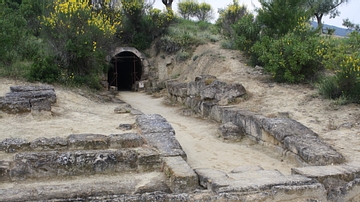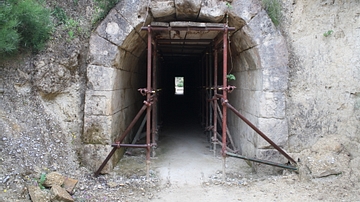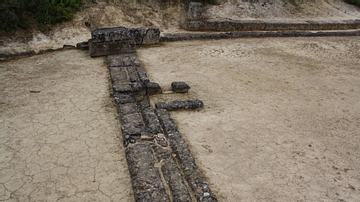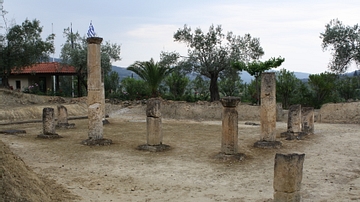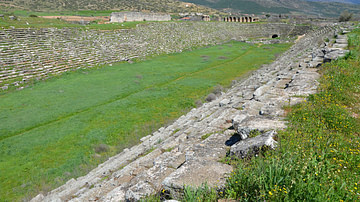Illustration
The Panhellenic Games of Nemea were held every two years from 573 BCE to 271 BCE with a brief transferal to Argos between ca. 415BC and ca 330 BCE. Originally, they commemorated the death of Opheltes. The stadium visible today dates from 330-320 BCE. The clay surface running track measured 600 ancient feet (178 m). The capacity could have been up to 30,000 but it is unlikely such a figure was ever reached. Spectators either sat on the grassy banks or on the two or three rows of stone seats. The judges (Hellanodikaion), dressed in mourning black, sat on a raised platform midway down the stadium. The line of stone starting blocks is still visible running across the track. Since 2004 CE there has been a revival of the games which are held every four years and are open to all.
About the Author
References
- S.G. Miller. Nemea: A Guide to the Site & Museum. 2004
Cite This Work
APA Style
Cartwright, M. (2012, May 08). Ancient Stadium, Nemea, Greece. World History Encyclopedia. Retrieved from https://www.worldhistory.org/image/612/ancient-stadium-nemea-greece/
Chicago Style
Cartwright, Mark. "Ancient Stadium, Nemea, Greece." World History Encyclopedia. Last modified May 08, 2012. https://www.worldhistory.org/image/612/ancient-stadium-nemea-greece/.
MLA Style
Cartwright, Mark. "Ancient Stadium, Nemea, Greece." World History Encyclopedia. World History Encyclopedia, 08 May 2012. Web. 14 Apr 2025.

